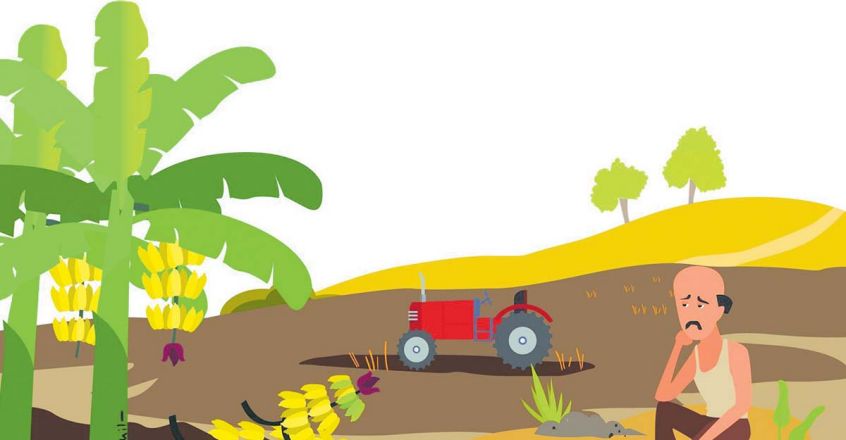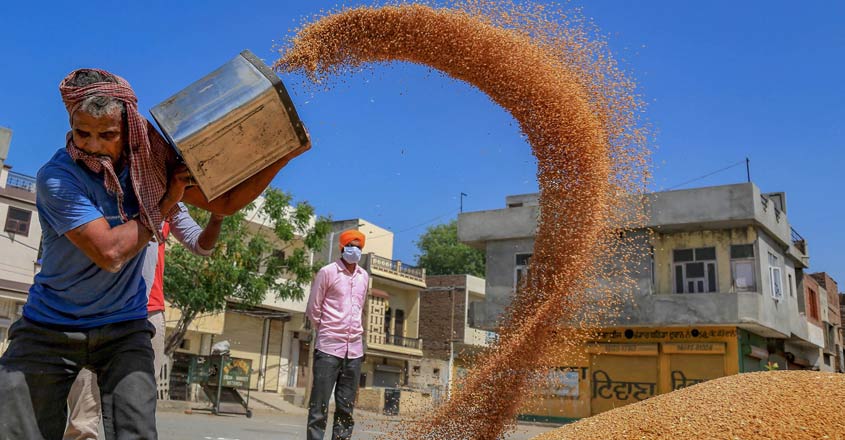
Shift in centre's agro policies to affect small and marginal farmers
by Dr Biswajit DharIndia’s exports have been among the worst hit by the COVID pandemic. From April to July this year, merchandise exports have fallen by over 30 per cent compared to the corresponding period in 2019. In sharp contrast, exports of several agricultural commodities, especially of foodgrains and oils, increased sharply. The July 2020 figures show that as compared a year earlier, exports of non-basmati rice rose by 48 per cent, other cereals by 205 per cent and oil seeds, by nearly 33 per cent. Figures for the first quarter, April to June, give a clearer picture about exports of foodgrains and oils; over the previous year, non-basmati rice exports increased by over 56 per cent, wheat by 130 per cent, and pulses by nearly 28 per cent.
Contributing to these trends are two factors; one, increase in supplies due to record foodgrains production, and two, deregulation of agricultural markets through the promulgation of three Ordinances.
Change in policies
The Essential Commodities Act was amended to end government’s monitoring over the foodgrains’ markets. The two other Ordinances, the “Farming Produce Trade and Commerce (Promotion and Facilitation) Ordinance, 2020” and “The Farmers (Empowerment and Protection) Agreement on Price Assurance and Farm Services Ordinance, 2020” were brought, according to the government, to introduce “barrier free trade in agricultural produce” and to empower the farmers to engage with processors, aggregators, wholesalers, large retailers and exporters. These Ordinances would allow the large traders to deal with the farmers directly, circumventing the Agricultural Produce Marketing Committees (APMCs).
The amendment of the Essential Commodities Act deregulates the market at a juncture when, more than ever in the past, there is a pressing need to monitor the market for food products, since even a minimal spike in prices could severely impact the large sections severely affected by the economic crisis. And, food prices are on the upswing, as the figures of consumer price index for July show. Food price inflation is near double-digits and significantly higher prices of pulses and oils are already hurting the consumers. However, as per the amendment, the government would only intervene when there is 50 per cent increase in the retail prices of these products.

Big traders to benefit
There is hardly a doubt that the middlemen controlling APMCs have undermined the interests of the farmers. But the government’s decision to allow big traders reach the farmers directly would be much worse. The Swaminathan Commission had recommended that an efficient marketing system with farmer’s organisations as important players could significantly add to farmer’s income. The Commission had emphasised that small and marginal farmers suffer loss of income due to distress sale immediately after harvest and are also on the receiving end against the Commission agents and traders. Farmers in Kerala are well acquainted with this situation. Ironically, the Ordinances have enhanced the traders’ role in agricultural markets. On the other hand, Swaminathan Commission’s recommendation that the minimum support price should be at least 50 per cent above the weighted average cost of production has again been ignored.
Shift in favour of export-oriented trade
A major impact of the Ordinances would be felt from the emphasis on export-orientation of Indian agriculture. This is a fundamental policy shift, as for over the past five decades, agricultural policies have focused on two critical objectives: realisation of food security and protection of rural livelihoods. The importance of these policies was realised even more during the country’s tryst with economic liberalisation from the early 1990s, which overlapped with India joining the World Trade Organization (WTO).
One of the most contentious issues in the WTO has been liberalisation of global agricultural markets, an agenda promoted by the United States (US) and the European Union (US). India’s stance in this regard was effectively articulated by the then Commerce Minister, Pranab Mukherjee, who argued in the 1994 Ministerial Meeting which launched the WTO that the Government of India was “firmly committed to protecting the interests of our farmers who constitute the country's life-line and to the objective of ensuring food security for our people”. By adopting this stance, the government was able to impose high tariffs on commodities that are vital for protecting domestic food security and rural livelihoods, and which continues till date. If such high tariffs were not imposed, global agri-business could have easily swamped India’s markets by exporting subsidised products from both the US and the EU, as they have done in many other developing countries.
India maintained its long-standing policy focus on agriculture while negotiating bilateral free trade agreements (FTAs). This enabled the government to protect domestic markets from imports despite engaging with agricultural exporters like Thailand, Malaysia, and Vietnam. Several on-going FTA negotiations have not progressed because India has remained steadfast in protecting its small farmers from adverse import competition.
The implications of the change in agricultural policies being ushered in by the government are not difficult to fathom. In India’s bilateral FTA engagements as well as in the WTO, partner countries are unlikely to accept India’s export-oriented stance, while its own market remains largely protected behind high tariffs. But before comprehensively opening India’s market to imports, the government must have a plan in place for sustaining domestic food security and to also protect the livelihoods of almost 60 per cent of the workforce that is directly or indirectly dependent on agriculture.
(Dr Biswajit Dhar is a professor at the Centre for Economic Studies and Planning at the Jawaharlal Nehru University, Delhi.)